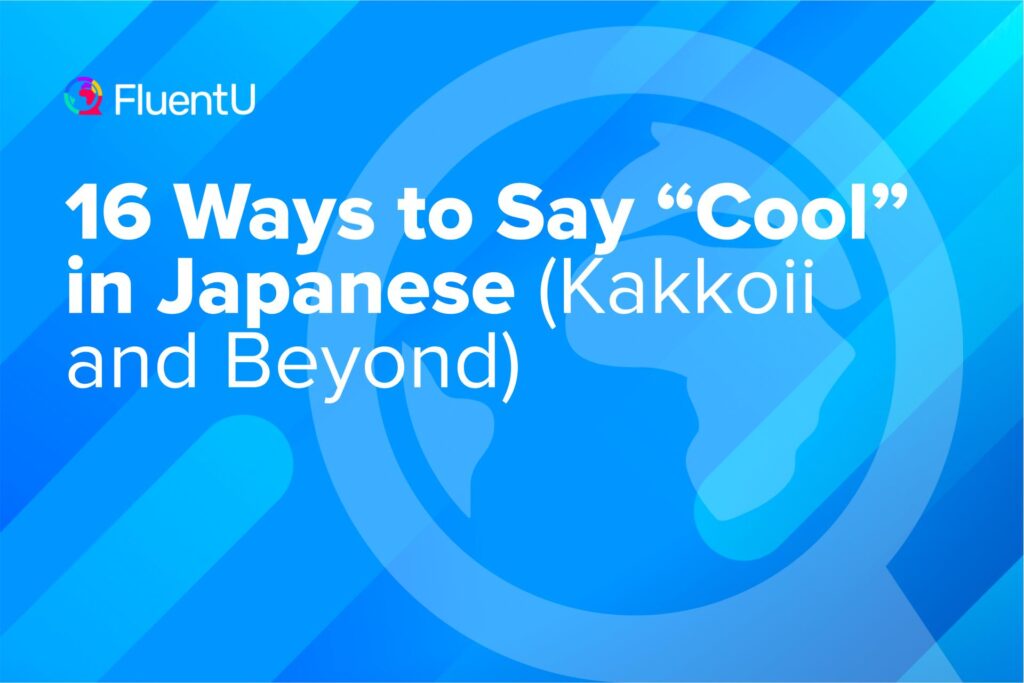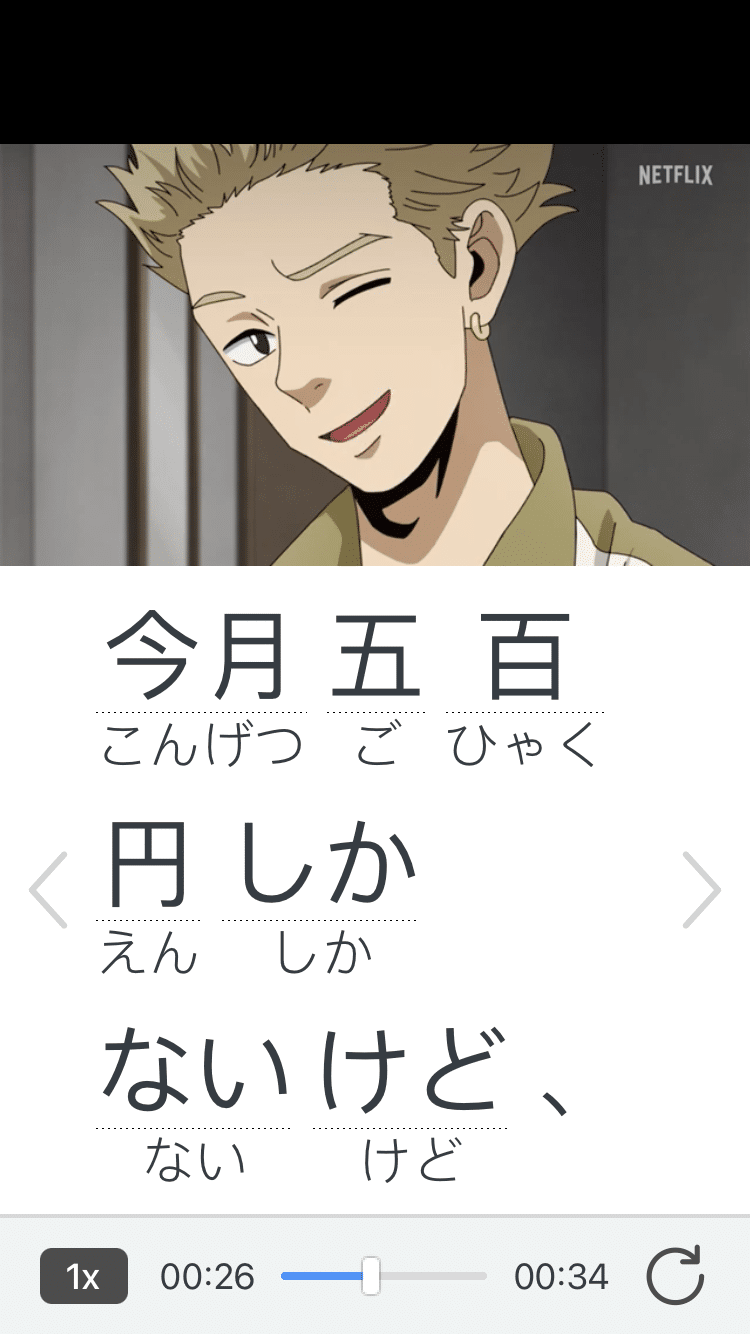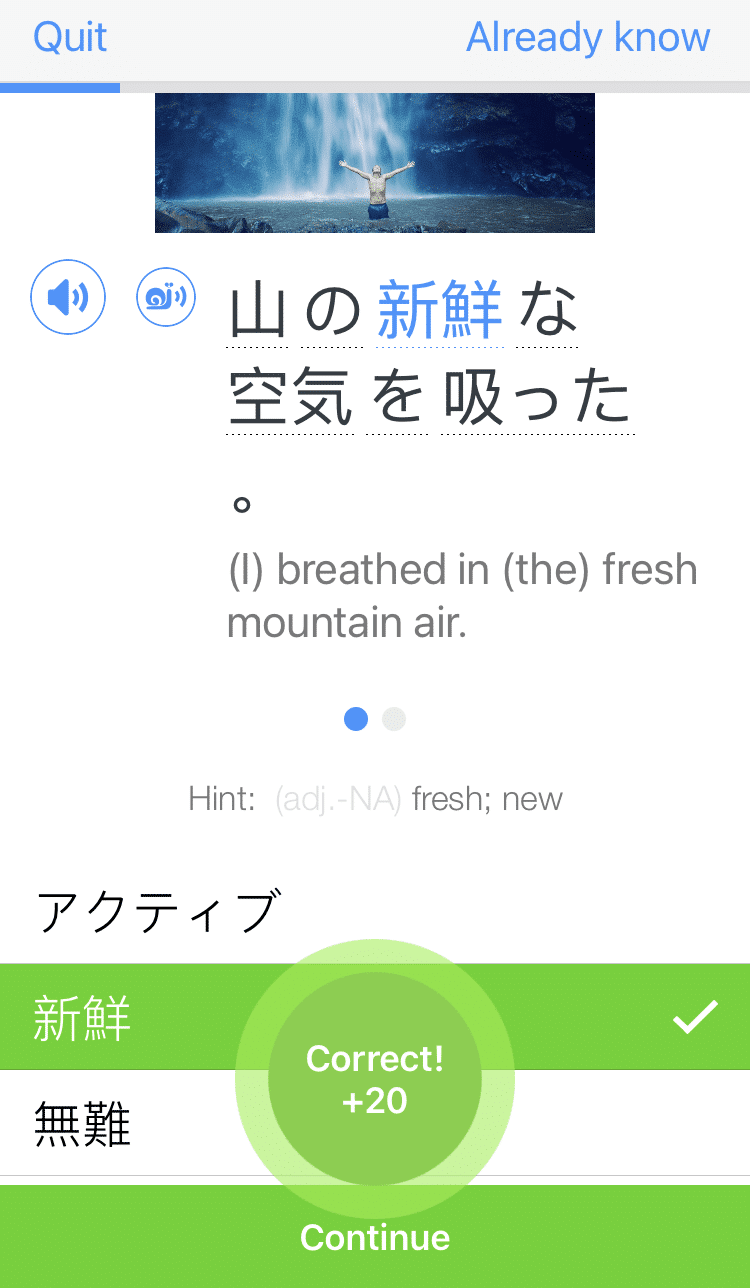Contents
- 1. かっこいい (kakkoii)
- 2. すごい (sugoi)
- 3. イケてる (iketeru)
- 4. カッチョいい (kaccho ii)
- 5. クール (kuuru)
- 6. 格好つける (kakko tsukeru)
- 7. 洒落てる (shareteru)
- 8. ヤバい (yabai)
- 9. 素敵 (suteki)
- 10. イケメン (ikemen)
- 11. 格好つく (kakkou tsuku)
- 12. スゲェ (sugee)
- 13. カモーン (kamoon)
- 14. かっこええ (kakkoee)
- 15. かっちょええ (kaccho ii) / カッチョええ (kaccho yoi)
- 16. かっちょいい (kaccho ii) / カッコつける (kakko tsukeru)
- Cool Japanese Words
- And One More Thing...
16 Ways to Say “Cool” in Japanese (Kakkoii and Beyond)

You’d be surprised how often you use the word “cool” (or some other equivalent) in English. So as a Japanese learner, you may feel at a loss for words when you can’t say it in Japanese.
Let’s explore the nuances of each expression, from the mainstream to the slangy. You’ll be dropping these phrases like a native Japanese speaker in no time.
Download: This blog post is available as a convenient and portable PDF that you can take anywhere. Click here to get a copy. (Download)
1. かっこいい (kakkoii)
This is the most standard and widely used term for “cool” in Japanese. It can describe a person, object or action that’s stylish or impressive.
The word kakkoii in Japanese is often used to describe something or someone as “cool” or “stylish.” Here are a few ways you can use it:
- そのジャケットはかっこいいですね。 (Sono jaketto wa kakkoii desu ne.) — That jacket is cool, isn’t it?
- あの人はかっこいいです。 (Ano hito wa kakkoii desu.) — That person is cool.
- 彼のスケートの仕草はかっこいい。 (Kare no sukēto no shigusa wa kakkoii.) — His skate moves are cool.
- その映画はかっこいいアクションシーンがたくさんある。 (Sono eiga wa kakkoii akushon shīn ga takusan aru.) — That movie has a lot of cool action scenes.
2. すごい (sugoi)
While primarily translated as “amazing” or “awesome,” sugoi can also be used to convey a sense of something being cool or impressive.
3. イケてる (iketeru)
This is a colloquial expression often used among young people. It signifies something or someone being stylish, trendy or cool.
4. カッチョいい (kaccho ii)
This is an informal phrase, and is commonly used in casual conversations among friends.
5. クール (kuuru)
This one might sound familiar! Borrowed from English, kuuru is used in Japanese to describe someone who is cool in a calm, composed or sophisticated manner.
6. 格好つける (kakko tsukeru)
This phrase is often used to describe someone acting cool or trying to be stylish, sometimes with a slightly negative connotation.
7. 洒落てる (shareteru)
This term refers to being stylish or sophisticated and can be used to express something as cool in a fashionable sense.
8. ヤバい (yabai)
Originally meaning “dangerous,” yabai is often used informally to convey excitement or awe, similar to saying something’s cool.
9. 素敵 (suteki)
While it directly translates to “lovely” or “charming,” suteki is used to express admiration and can be applied to things or people that are cool in a positive sense.
10. イケメン (ikemen)
This term specifically refers to a cool, handsome man. It’s often used to describe someone who isn’t just attractive but also has a cool demeanor.
11. 格好つく (kakkou tsuku)
This phrase is used to describe someone dressing well or looking stylish, giving them an overall cool appearance.
12. スゲェ (sugee)
An abbreviated form of sugoi, sugee is used online and in text messages to convey excitement or awe, similar to saying something is cool.
13. カモーン (kamoon)
Borrowed from English, kamoon is often used in a similar way to say “come on” or “cool.” It’s a very casual expression.
14. かっこええ (kakkoee)
In the Kansai region (including cities like Osaka and Kyoto), you’ll hear the regional dialect 関西弁 (Kansai-ben). In this dialect, locals will use the word kakkoee to mean “cool” or “good-looking.”
15. かっちょええ (kaccho ii) / カッチョええ (kaccho yoi)
広島弁 (Hiroshima-ben), used in Hiroshima and the surrounding areas, uses these variations of the standard kakkoii.
16. かっちょいい (kaccho ii) / カッコつける (kakko tsukeru)
These are the 九州弁 (Kyushu-ben) variations, which are used to convey a sense of something being cool or stylish.
Cool Japanese Words
Want to learn some more cool Japanese words? Here’s a fun list of awesome words to get you started.
わびさび (Wabi-Sabi) — Finding beauty in imperfection and appreciating the transient nature of things.
しょうがない (Shoganai) — It can’t be helped; accepting the things beyond your control.
生き甲斐 (Ikigai) — A reason for being; the concept of finding joy and purpose in life.
積ん読 (Tsundoku) — Acquiring books but letting them pile up without reading them.
木漏れ日 (Komorebi) — The interplay of light and leaves when sunlight filters through trees.
かわいい (Kawaii) — Cute; charming; lovable.
元気 (Genki) — Healthy, lively, full of energy.
もったいない (Mottainai) — A sense of regret over waste; expressing the idea of “what a waste!”
物の哀れ (Mono no Aware) — The bittersweetness of fleeting beauty; an awareness of the impermanence of things.
幽玄 (Yūgen) — A profound, mysterious sense of beauty; the subtle and deep awareness of the universe’s vastness.
沈黙 (Chinmoku) — Silence; quietness; a state of profound stillness.
花見 (Hanami) — The traditional custom of enjoying the transient beauty of cherry blossoms.
森林浴 (Shinrin-Yoku) — Forest bathing; the practice of immersing oneself in the forest atmosphere for relaxation.
悟り (Satori) — Sudden enlightenment; a moment of spiritual awakening.
To see these words used in context, there’s the language learning program FluentU.
FluentU takes authentic videos—like music videos, movie trailers, news and inspiring talks—and turns them into personalized language learning lessons.
You can try FluentU for free for 2 weeks. Check out the website or download the iOS app or Android app.
P.S. Click here to take advantage of our current sale! (Expires at the end of this month.)

Now that you know how to say “cool” in Japanese, have fun and stay cool!
And One More Thing...
If you love learning Japanese with authentic materials, then I should also tell you more about FluentU.
FluentU naturally and gradually eases you into learning Japanese language and culture. You'll learn real Japanese as it's spoken in real life.
FluentU has a broad range of contemporary videos as you'll see below:

FluentU makes these native Japanese videos approachable through interactive transcripts. Tap on any word to look it up instantly.

All definitions have multiple examples, and they're written for Japanese learners like you. Tap to add words you'd like to review to a vocab list.

And FluentU has a learn mode which turns every video into a language learning lesson. You can always swipe left or right to see more examples.

The best part? FluentU keeps track of your vocabulary, and gives you extra practice with difficult words. It'll even remind you when it’s time to review what you’ve learned. You'll have a 100% personalized experience.
Start using the FluentU website on your computer or tablet or, better yet, download the FluentU app from the iTunes or Google Play store. Click here to take advantage of our current sale! (Expires at the end of this month.)







